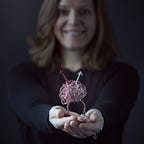Making a Mess of Inclusive Conversations
When I talk about ‘messy’ conversations, I’m talking about the reluctance and avoidance to have conversations that aren’t perfect, aren’t comfortable, and are generally pretty imperfect in every way.
This can end up happening when it comes to conversations around the ‘isms’ and ‘phobias’, because even though they’re often generally avoided, when those conversations start up, we find that unconscious bias rears its ugly head (no offence). Even people with the best intentions can get it wrong, and when certain conversations are potential minefields, good people can become fearful of what to say, how they say it, and how best to get their point — or desire for learning — across to the other people in the dialogue. Without setting boundaries, things can often result in doing more of the very damage we’re trying to get away from when we’re looking to work towards inclusion and balance — especially in the workplace.
The thing about unconscious bias is that we are not conscious of it. I know that sounds ridiculously bloody obvious, but you’d be surprised at just how much stuff we’re ‘putting out there’ without realising it at all. It’s just how we’re socialised. Let’s look at some examples… Everyone has probably heard of the acronym BAME, where the letters stand for Black, Asian and Minority Ethnic. If we unpack this, though, we’re pretty much putting ‘everyone who’s not white’ into one category. Straight away, you can see the issue, and why although apparently standard language is being used, it’s not necessarily an appropriate, fair, or conducive choice for an inclusive conversation. I’d suggest having a look at the Sewell Report (The UK Report of the Commission on Race and Ethnic Disparities) for more info around this if it’s of interest, although I’d like to state that this concept is one of very few things in the report I actually agree with.
Of course, it’s important these conversations take place, because otherwise how can we be aware of the potential harm we might do, and how will we gain vital education and opportunities to learn? We need to get better at this stuff and have the conversations that matter. People will otherwise become even more confused about what they can or can’t/ should or shouldn’t be saying, and this won’t help anyone, because then even more conversations run the risk of drying up altogether. More barriers go up, and this is the opposite of the work we’re trying to do and the outcomes we’re fighting to get when it comes to inclusion.
We often hear about things being ‘called out’ in a culture of shame, yet I prefer to talk about ‘calling in’; giving people the opportunity to understand why something might really cause harm or offence, and giving them options for other things that can be done, said or used. Instead of focusing on ignorance (wilful or otherwise), we need to think about adjusting our mindset, behaviours, beliefs, values, and language to make it safe for people to speak, listen and learn in a culture that is equal and inclusive for all.
Of course, this is all paramount in a professional workplace, yet I believe we have a duty to extend this out into our wider cultures and communities, as they are the breeding ground for our future leaders, influencers and decision makers. As there are still so many messy conversations (unintentional and intentional) taking place in the professional workplace, the work I do with my clients’ centres on doing the necessary work to realise and unpack our unconscious biases. We work together to do all that needs to be done to re-learn, so that our future conversations are a lot less messy and lead to outcomes, relationships and cultures that are more conducive, inclusive, and positive within our communities and organisations.
If you’re reading this and you’re thinking that your organisation — or individuals within it — can benefit from conversations and education, you don’t have to get on the phone to me straight away (though you’re always welcome). My suggestion is to read the books and take on the truths of those who’ve lived the experience. Look up news stories that shed light on all angles, read articles and journals, listen to podcasts, and watch documentaries. Attend courses run by the voices you actually need to listen to. My advice that you can act on straight away, though, is to read the books. A great book is ‘Fierce Conversations’ by Susan Scott. Whilst not a book about diversity and inclusion, Scott echoes my thoughts that we need to listen more and talk less. Learn to amplify the voices of others. I know it’s tempting to instead learn from the friend or work colleague in your circle who fits into a certain demographic or group, but really, unless they have agreed that they are happy to go through this with you, make no assumptions. They shouldn’t be expected to do the emotional labour on top of living the experience. If they want to talk, they will, but in the meantime, seek out your own education.
If you do need my help with having messy (and inclusive) conversations, you know where I am. The key is simply to start.
